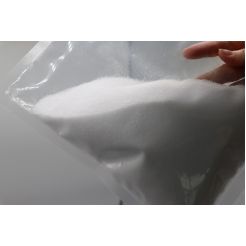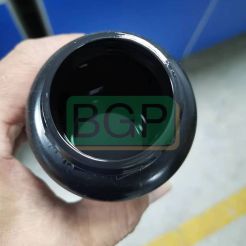BHT FOOD GRADE
Butylated hydroxytoluene (BHT), also known as dibutyl hydroxytoluene, is a white crystal or crystalline powder, basically odorless, tasteless, melting point at 69.7, boiling point at 265, quite stable to heat.
Product Description
What is bht food grade?
Butylated hydroxytoluene (BHT), also known as dibutyl hydroxytoluene, is a white crystal or crystalline powder, basically odorless, tasteless, melting point at 69.7, boiling point at 265, quite stable to heat. when contact with metal ions, especially iron ions, does not show color, good antioxidant effect. It has the characteristic sublimation of monophenolic type and evaporates with water vapor when heated. Insoluble in water, glycerol, and propylene glycol, but easily soluble in ethanol and grease. Preparation General Made from p-cresol and tert-butanol with concentrated sulfuric acid as catalyst and alumina as a dehydrating agent. In addition to bht antioxidante food grade, we also supply bht feed grade antioxidante.
BHT Technical Parameters
| TEST ITEM | SPECIFICATION |
| APPEARANCE | WHITE CRYSTAL POWDER |
| STANDARD | GB29924-2013 |
| MELTING POINT | ≥69.0 |
| MOISTURE | ≤0.05 |
| Burning residue | ≤0.005 |
| Sulfate | ≤0.002 |
| As, mg/kg | ≤1 |
| Heavy metal (pb)mg/kg | ≤5 |
| Free phenol,w% | ≤0.02 |
Application of BHT food grade additives
(1) BHT food grade antioxidante can effectively retard the oxidative rancidity of vegetable oil and improve the storage period of fried fast food. It is effective in shortening.
(2) The antioxidant property of BHT and its application in food is basically the same as that of BHA, but its antioxidant capacity is not as good as that of BHA.
(3) The effect of BHT antioxidante food grade in combination with BHA or TBHQ exceeds that of BHA alone. However, it has no synergistic effect on gallic acid esters.
(4) Citric acid and its esters can be used as synergists, such as in vegetable oils, a compound of BHT: BHA: citric acid = 2:2:1 can be used. Refined oil with BHT must be added after alkali refining, decolorization and deodorization, and cooling to 12 under vacuum. The container should be clean. When adding, first dilute BHT with a small amount of oil and then add to a large amount of oil. Citric acid is dissolved in water or ethanol and then added and stirred well.
(5) There is no optimum concentration of BHT, as the concentration of BHT increases, the stability of oil and grease also increases. However, at higher concentrations, the rate of improving the stability of oil becomes smaller, and when the concentration reaches above 0.02%, the phenolic odor will be introduced.
(6) BHT food grade can also be added to the wrapping paper or packaging plastic of baked goods, frozen foods, and other convenience foods at a rate of 0.2-1kg per ton of packaging material. BHT food grade is usually used in combination with BHA, gallate, and citric acid.
Functions of BHT in cosmetics
In addition to food preservation, BHA and BHT are also used to preserve fats and oils in cosmetics and medicine. Butylated Hydroxytoluene or BHT is a stabilizer that can be found in cosmetic products. It acts as an antioxidant that helps maintain the properties and performance of a product as it is exposed to air (to avoid a change in odor, color, texture...). BHT is used in various cosmetic products, including certain formulas containing fats or in aqueous emulsions containing certain active ingredients or plant extracts. It is an antioxidant used in certain products to stabilize and protect the raw materials themselves, and less as an ingredient in and of itself. It can resist high temperatures (unlike some natural antioxidants): it is therefore very useful in certain raw material manufacturing processes.
In addition to food additives such as bht food grade, we also offer sodium benzoate powder and sodium benzoate prill.
Note: Dosage of BHT food grade
FAO/WHO (1984) stipulates general edible fats and oils used alone or in combination with BHA, TBHQ, gallic acid esters, the maximum use level is 0.2g/kg (of which gallic acid esters shall not exceed 100mg/kg); for milk fat, the maximum use level is 0.2g/kg, and the total use level with BHA and gallic acid esters is 0.2g/kg, but gallic acid esters shall not exceed 100mg/kg, for margarine, used alone or in combination with BHA and gallic acid esters, the maximum use level is 0.2g/kg. However, gallic acid shall not exceed 100mg/kg, shall not be used for direct sterilization, and shall not be used in the preparation of milk and its products, for margarine, alone or with BHA, gallic acid esters, the maximum use level is 0.1g/kg.
1. For fats and oils, BHT is more effective for animal oils than BHA. BHT will be particularly effective if the lard is in a paper container and in direct contact with the paper, using a concentration of 0.005%-0.02%. In the mixture of BHA, BHT, gallic acid ester, citric acid, the amount of BHT is 0.001%-0.01%. For casein, BHT is better than either BHA or the BHA-BHT mixture. Like BHA, BHT has a little protective effect on fats and oils used in fried foods, especially for vegetable oils, which do not have high antioxidant activity. BHT is also widely used to stabilize essential oils such as d-rutylene, orange oil, lime oil, and geranium.
2. In baked or fried foods, BHT does not carry in as well as BHA; in various cereals and low-fat foods, BHT acts as well as BHA and is widely used.
3. For meat products, BHT is effective in delaying the catalytic oxidation of ortho-ferric heme in pork. BHA and BHT are effective in combination for carp, chicken, pork chops, and frozen smoked pork slices. Like BHA, BHT is effective for dry frozen beef, poultry meat, pork, and fish. It is also effective for retarding discoloration and spoilage of various dry sausages.
4. For dairy products, 0.008% BHT can be used to stabilize milk. Using a mixture of BHT and PG is more effective than using BHT alone. The addition of BHT to milk powder can give off some phenolic odor when brewed.
5. For nuts and preserves, a mixture of BHA and BHT can be effective in stabilizing shelled foods such as walnuts and peanuts. As with BHA, BHT is incorporated into an edible protective shell that effectively protects a variety of nuts and effectively extends the shelf life of roasted chopped nuts and almonds.
BHT is added to chewing gum bases to prevent them from becoming tasteless, hard, and brittle due to oxidation.
|
Animal oil |
0.001-0.01 |
| Vegetable oil | 0.002-0.02 |
| Baked goods | 0.01-0.04 (in terms of fat) |
| Cereals | 0.005-0.02 |
| Dehydrated soy milk | 0.001 |
| Essential oils | 0.01-0.1 |
| Chewing gum base | Reach 0.1 |
| Food packaging materials | 0.02-0.1 |
You may have some questions all here:
How does food grade BHT keep food fresh?
BHA and BHT are antioxidants. Oxygen preferentially reacts with BHA or BHT rather than oxidizing fats or oils, thereby protecting them from spoilage. BHA and BHT are phenolic chain-breaking antioxidants that prevent oxidative rancidity in foods. Oxidative rancidity results in the destruction of vitamins and essential fatty acids, degradation of flavor, and production of free radicals that cause stress and damage to our bodies. There is evidence that aging effects are a result of the accumulation of oxidation in our bodies. The phenolic antioxidants are added to foods that are sensitive to oxidation to prevent oxidation, so they are found in many places. In addition to being oxidized, BHA and BHT are fat-soluble. Both molecules are incompatible with iron salts.
Why are food grade antioxidants added to food?
Food additives are inevitably used as antioxidants in order to preserve the freshness of food. Food is easily affected by temperature, light, oxygen, metals, and enzymes during processing or storage. Exposure to the air will oxidize some ingredients in the food, which will cause discoloration, rancidity, or deterioration. Antioxidants are divided into two types: natural and chemically synthesized. The former includes vitamin C and E, and the latter includes BHA and BHT, etc. Most of the information on grape seeds, green tea, goji, red wine, fruits, and vegetables, etc., suggests they have positive health effects because of the antioxidant effects of their chemical constituents. Use of BHA and BHT improves the quality of our foods and improves their safety, from an oxidation standpoint.”
Why does BHT be questioned and the fact?
BHT is accused of being an endocrine disruptor and of having toxic effects on the liver, kidneys, and lungs at extreme doses, by ingestion. BHT is also suspected of having a potential for bioaccumulation in aquatic species. Lastly, it is accused of carrying a carcinogenic potential because it is confused with another ingredient called BHA. The fact is that BHT is not an endocrine disruptor according to the definition by the World Health Organization (WHO), whose role is to direct and coordinate international health within the United Nations. Studies showing the potential toxicity of BHT have been performed under conditions that are in no way similar to cosmetic use: ingestion of very high doses.

Zanchengs' advantage in supplying BHT food grade
As a manufacturer that owns the whole industrial chain of this product, our factory is very competitive and stable from the raw material and the technology, welcome to contact us!





